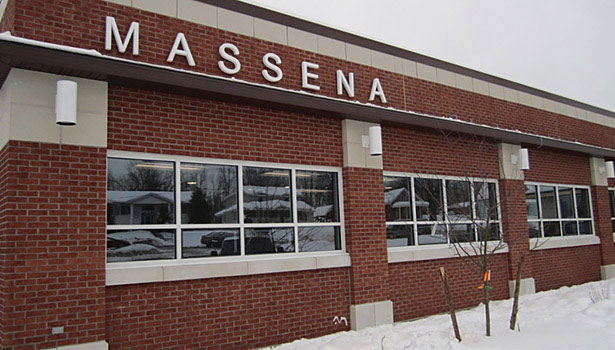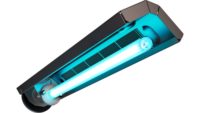If the little town of Massena, NY, were any further north, it would be in Canada – and it has the climate to prove it.
With average lows below 10°F during much of the winter, some building owners have found that it makes sense to focus heating energy down low where people need it most. That’s why Massena Electric, a not-for-profit electric utility owned and operated by the Town of Massena, chose radiant heat as the primary heat source for a building expansion and renovation project that took place the first part of 2013. To efficiently fulfill the leftover need for fresh air, Systemair Topvex ERVs were selected.
Massena Electric, designated as a RP3™ utility (Reliable Public Power Provider) by the American Public Power Association (APPA), opted to use ground source geothermal heat pumps as the heat source for the radiant system, which provides heating to 6,300 sq ft of new office and conference room space. Water-to-water heat pumps service the primary heating load; water-to-air heat pumps provide cooling during the summer season and back-up heat during the winter. It is a design carefully tailored to maximize both comfort and efficiency given Massena’s cold climate, but alone it did not address the utility’s other critical need — fresh air.
Pat Ockenfels of Beardsley Design, the engineering firm responsible for the mechanical design for Massena Electric, was well aware that introducing the required cfm of fresh air would quickly undermine the energy savings accrued by the combined geothermal and radiant systems. An efficient ERV would be required to temper all that fresh cold air, but space was a problem.
“This was an energy company, so we wanted to give them the most energy efficient system we could given the -26°F design cold temperature,” said Ockenfels.
This goal, along with the space limitations of the small utility, led Ockenfels directly to the Systemair Topvex ERV. The Topvex fills a unique niche for commercial facilities that either have a relatively light need for outdoor air or prefer to meet the needs of various zones with smaller, dedicated units. According to designers, few commercial ERV’s can fit within the spaces that the Topvex’ compact design allows, either vertically or horizontally. Massena Electric was challenged with diverse demand zones as well as limited space in both the new and existing structures. The Topvex met both challenges at an efficiency level that the engineer desired.
Equipped with electronically commutated (EC) fan motors, which consume an average of 30% less energy than AC motors, the Topvex was able to offer operational savings. In addition, the high efficiency rotating heat exchanger is capable of recovering up to 85% of energy from the building exhaust air. The overall slim design makes it possible to install the Topvex in unlikely locations including small closets and above false ceilings. Yet, despite its compact size, the manufacturer has found the unit capable of delivering airflows of 300 to 1,600 cfm.
In the case of Massena Electric, the engineer was able to effectively apply the Topvex in three unique zones. In the new building, two Topvex units were applied, a 360-cfm unit serving the office space, and a 540-cfm unit dedicated to a conference room with occupancy sensors to simultaneously activate the heating and ventilation. In the latter case, the ERV supplies fresh air into heat pump supply air. The ERV serving the office spaces, which are heated with radiant, is completely decoupled. Another 800-cfm unit was installed above the ceiling in a cafeteria in an existing building. All of the units, which have onboard controls, are linked to Massena Electric’s building management system.
Despite the fact that this was his first time specifying a Systemair Topvex unit, Ockenfels said it was easy to integrate into the overall mechanical design, and he plans on duplicating the approach on future projects.
Ockenfels added that the Topvex was an especially good fit for this particular project because of the mild cooling climate. With summer highs rarely exceeding the 80s, the Topvex units significantly lighten the load on the water-to-air geothermal heat pumps, which provide cooling to the buildings.
As more facilities move away from the use of central air handlers, incorporating more efficient means of heating and cooling like geothermal and/or radiant as well as variable refrigerant systems, some designers believe the Topvex provides a “plug and play” ventilation solution that enhances building efficiency.



